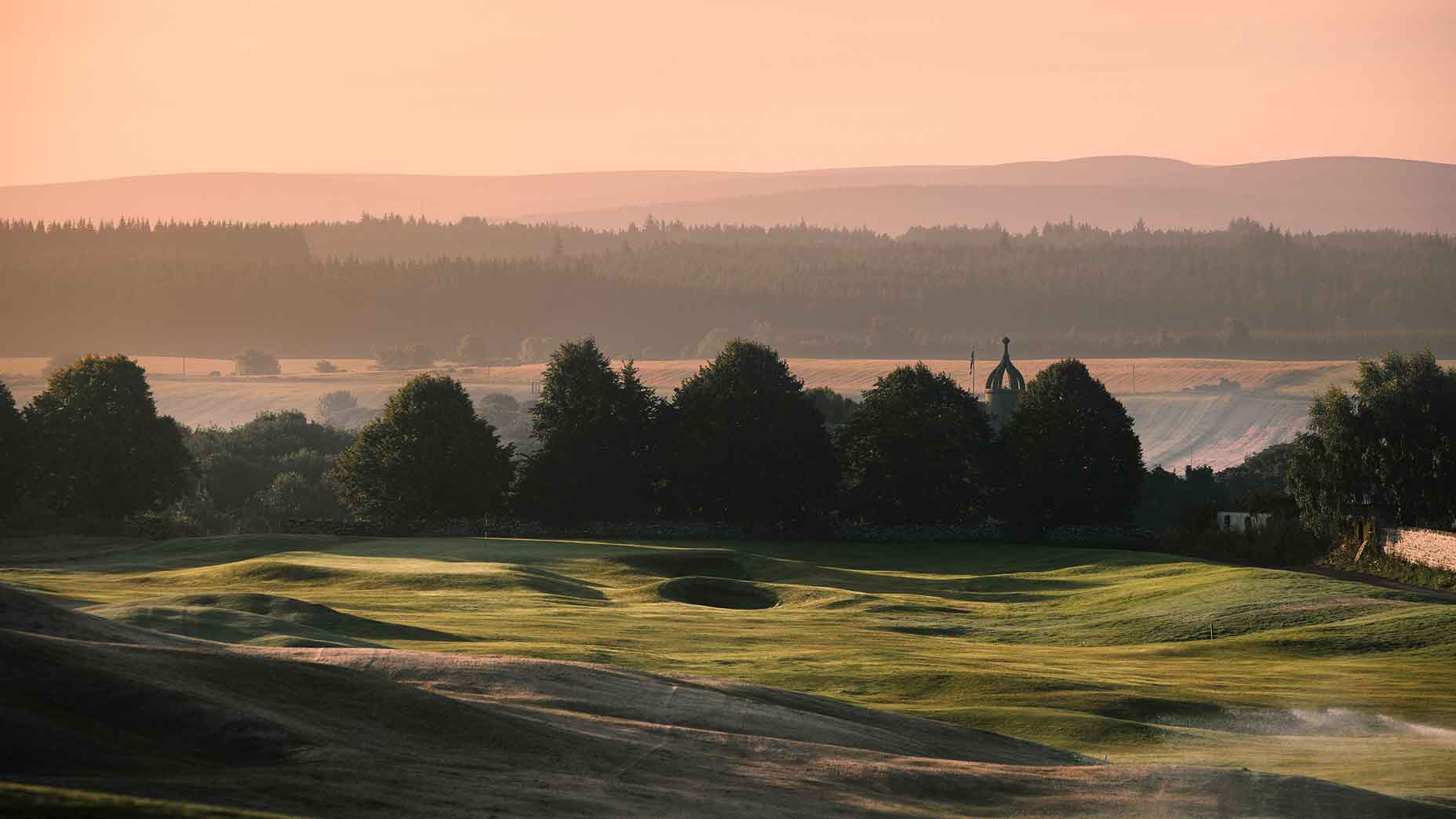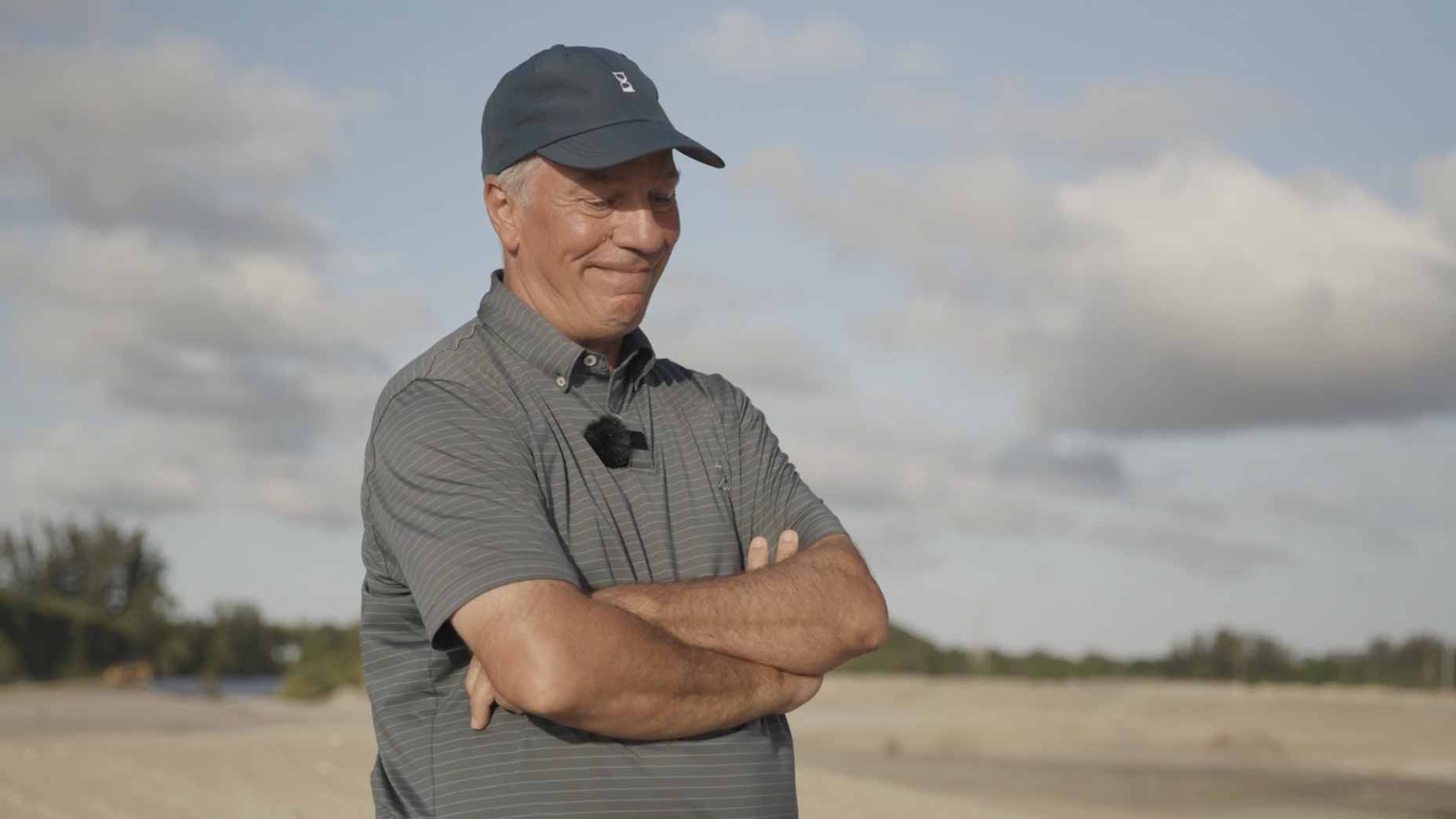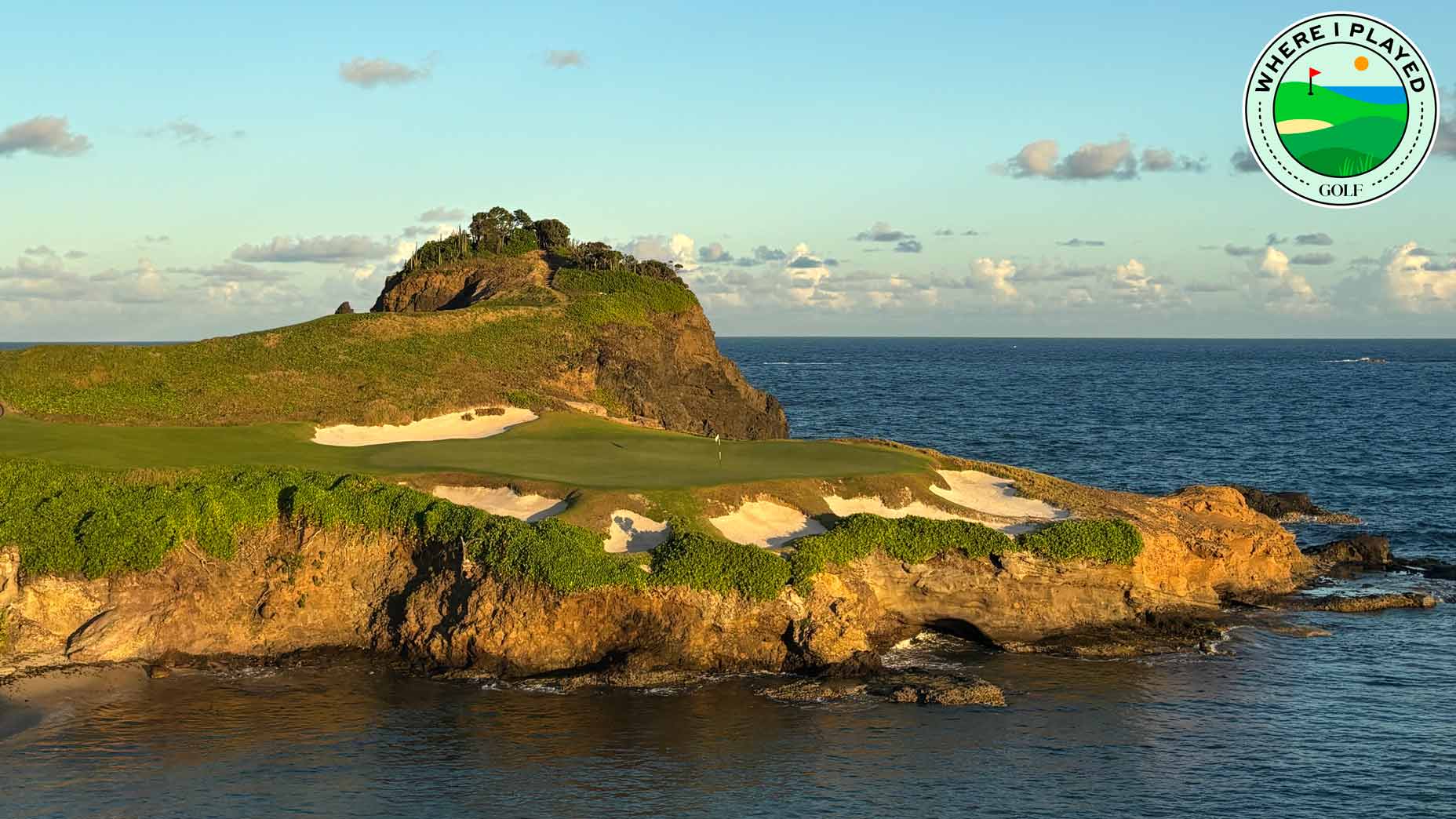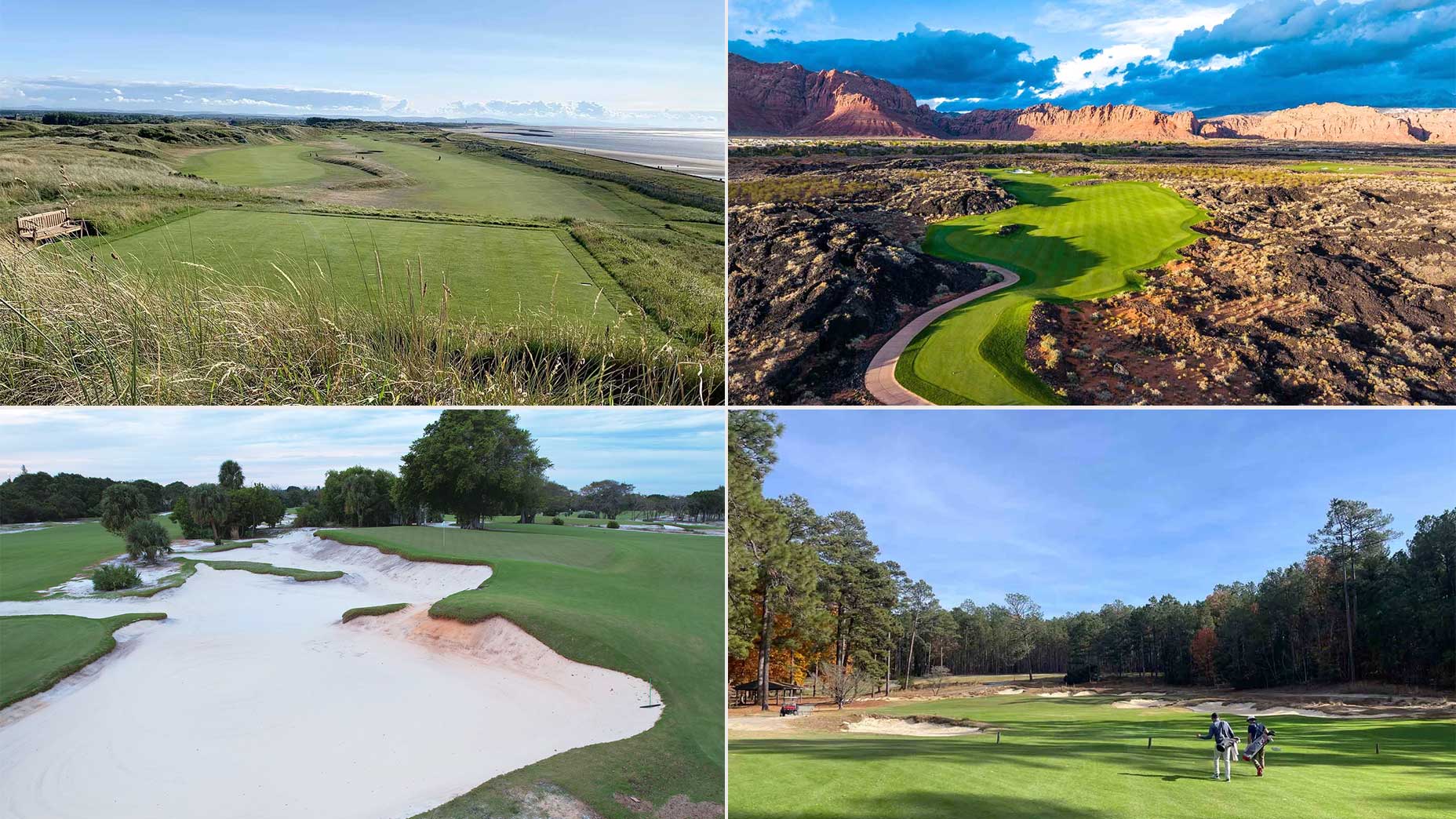With Tom Doak design in works, Scotland’s Cabot Highlands gathering steam
- Share on Facebook
- Share on Twitter
- Share by Email
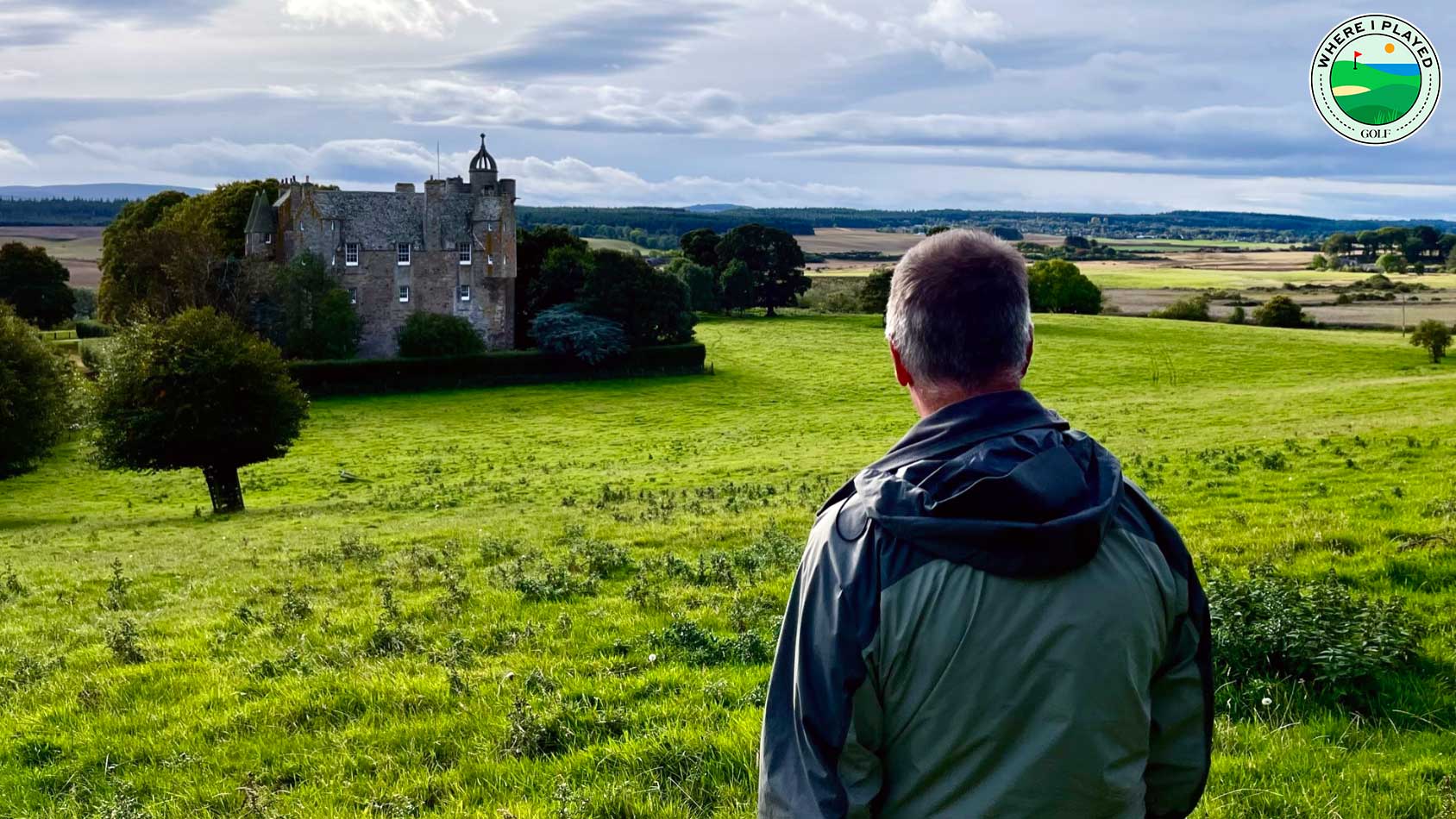
Tom Doak surveying the site of his forthcoming course at Cabot Highlands.
Alan Bastable
On a calm cloudy morning last fall, course designer Tom Doak was stationed on one of the high points of a new course he is building next to Castle Stuart, the four-time Scottish Open site in the windy and wonderful Scottish Highlands. From what will be the approximate location of the 2nd tee — the course isn’t scheduled to open until 2025 — Doak looked down a grassy slope toward the Castle Stuart, a stately and recently restored tower house that has stood sentinel on the banks of the Moray Firth since the 1620s.
“We could have a par-3 with the green over to the right in front of the clump of trees,” Doak said, motioning toward a swath of pasture to the right of the castle. “But it’s into the wind and lots of times it’s going to be just a beast of a par-3, and we sure don’t want to start with a really hard par-5 into the wind and a really hard par-3. So we’re thinking about where the flag is back there — we’re about 260 from there — it could be a short par-4 instead. People who are scared of hitting too close to the castle grounds can bail away to the right.”
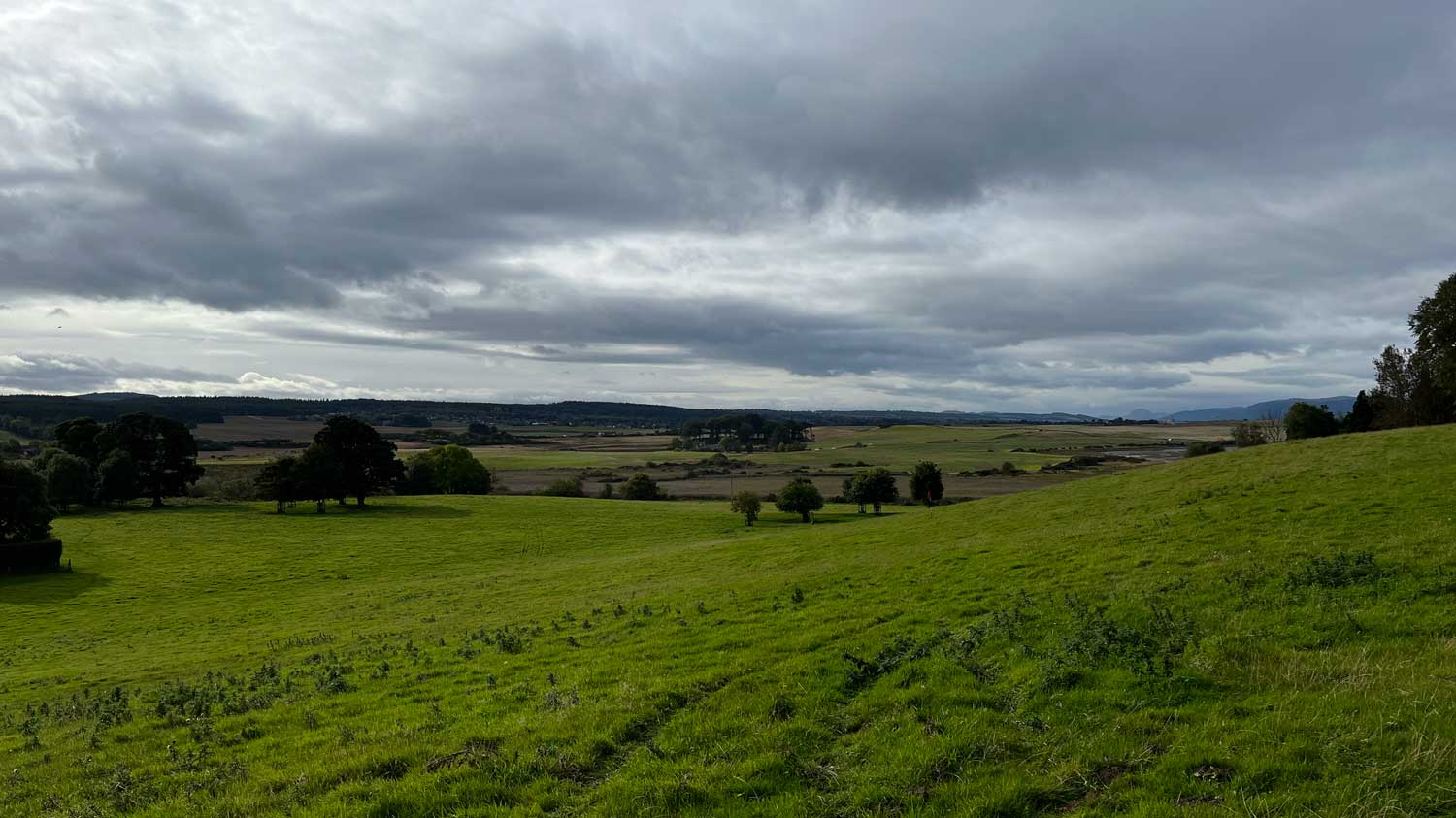
When building golf courses on Scotland’s ancient sod, it’s difficult not to bump against history — if not incorporate that history into the design itself. Doak knows this well, because he knows Scotland well, his first visit coming back in his post-grad days in the early 1980s when fresh out of Cornell he spent a stint caddying at the Old Course and studying the golfing treasures of Great Britain and Ireland, an education that would serve as the underpinning for his approach to course design.
The yet-to-be-named Castle Stuart sister course won’t be Doak’s first Scotland credit — that distinction belongs to his work at the Renaissance Club, about 200 miles south, in North Berwick — but it does represent another first. Last June, Castle Stuart was acquired by Cabot, the hard-charging Canada-based golf-resort development company whose international portfolio now includes properties or properties-in-progress in Nova Scotia; Saint Lucia; British Columbia; Central Florida; and, yes, Inverness, Scotland. Doak’s course is Cabot’s first original design in a part of the world where — given the deep reserve of mouthwatering golf already on offer — it can be difficult to turn heads.
“That’s where you’ve got to have a good sense of what the character of Scottish links really is,” Doak said. “The good thing about trying to do this in Scotland instead of in Florida is, if you’re ever not sure, you drive right over there, or drive up north, and go have a look at a few other courses.”
Royal Dornoch. Nairn. Brora. Tain. Golspie. They’re all within a 75-minute drive of Castle Stuart. So too is the delightfully quirky design at Fortrose and Rosemarkie, which dates to the 1790s and sits on a wind-whipped peninsula that juts into the Moray Firth just across the way from Castle Stuart. These rumpled, exposed links don’t ask for a different style of golf than is played stateside — they flat-out demand it.
“I still think that we as designers have a hard time visualizing people hitting the ball along the ground the way they do over here and really designing an approach for landing the ball 20 or 30 yards short of the green and feeding off something to get it in there,” Doak continued. “We all talk about it like we do that, but I don’t see many modern courses where you would want to hit those shots. The more we can get that here, the more it will feel like a real Scottish golf course.”

Cabot Highlands, as the property is now called, has much going for it, perhaps first and foremost its location. For American golfers, a Scottish Highlands golf expedition might sound like an exotic trip that requires multiple flight transfers and a five-hour bus ride on rolling, sheep-strewn roads. Truth is, if you fly direct to London, Inverness is only another 90-minute hop from there. And when you touch down in the Land of Nessie, your journey is all but done, with Cabot Highlands just a 5-minute drive from the airport. Indeed, when it comes to top-shelf resort golf, few destinations offer a shorter tarmac-to-tee commute.
When the Doak course takes flight, Cabot Highlands’ owners believe their property will become a bonafide gateway not just to the Highlands golf scene but also to the Highlands many other activities. Golf and hiking. Golf and fly fishing. Golf and Nessie hunting. Golf and exploring Inverness. (If you do make it into town, book a table at Rocpool, a chic brasserie in the city center that serves up beef carpaccio that melts on your tongue and seafood so fresh it tastes like it just leapt out of the River Ness.)
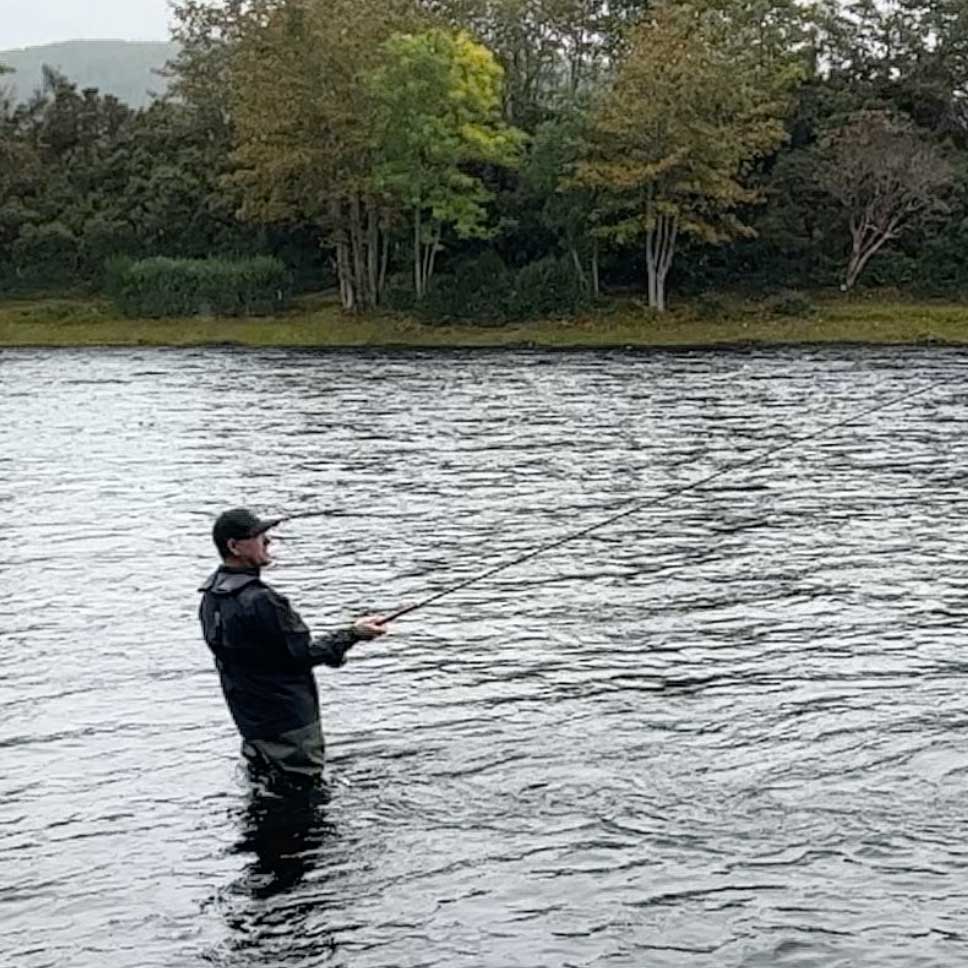
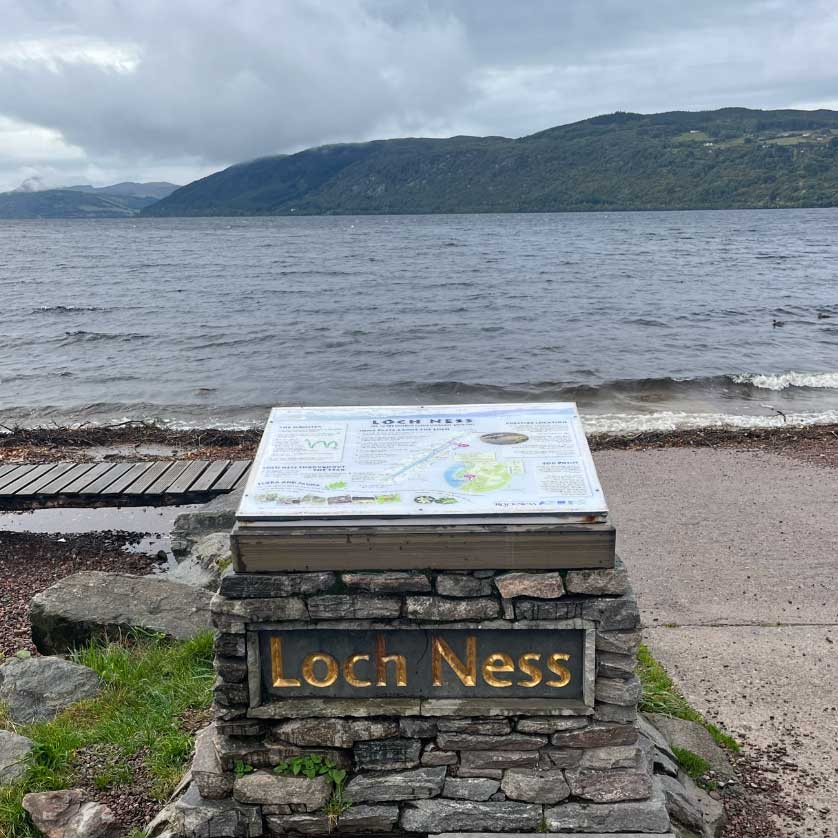
Lodging at Cabot Highlands is scarce, but the resort has plans to expand its accommodations. There are three neatly appointed guest houses — Golf Lodge, the Farmhouse and the Castle Cottage — each of which can house up to eight residents. On a recent visit, I bunked in the charming Golf Lodge, which has floor-to-ceiling windows in the main living space that look out on to the 15th fairway of Castle Stuart and, beyond that, the frigid waters of the firth. You can enjoy your morning latte on the patio as you look out at the Gil Hanse and Mark Parsinen test that awaits you.
Castle Stuart, which ranks 77th on GOLF’s Top 100 Courses in the World list, opened in 2009, the brainchild of the late Parsinen, an American developer who also built Kingsbarns, just down the road from St. Andrews. Like Kingsbarns, Castle Stuart is not a “classic” links but more of the nouveau variety, by which we mean it doesn’t feel like it was built 200 years ago, because, well, it wasn’t. Take the imposing wall of gorse lining the left of the 1st fairway — that’s not native to the site, it was planted there. The fairways are forgiving off the tee, and the greens generous in size, but there’s still endless variety and need for strategic thinking.
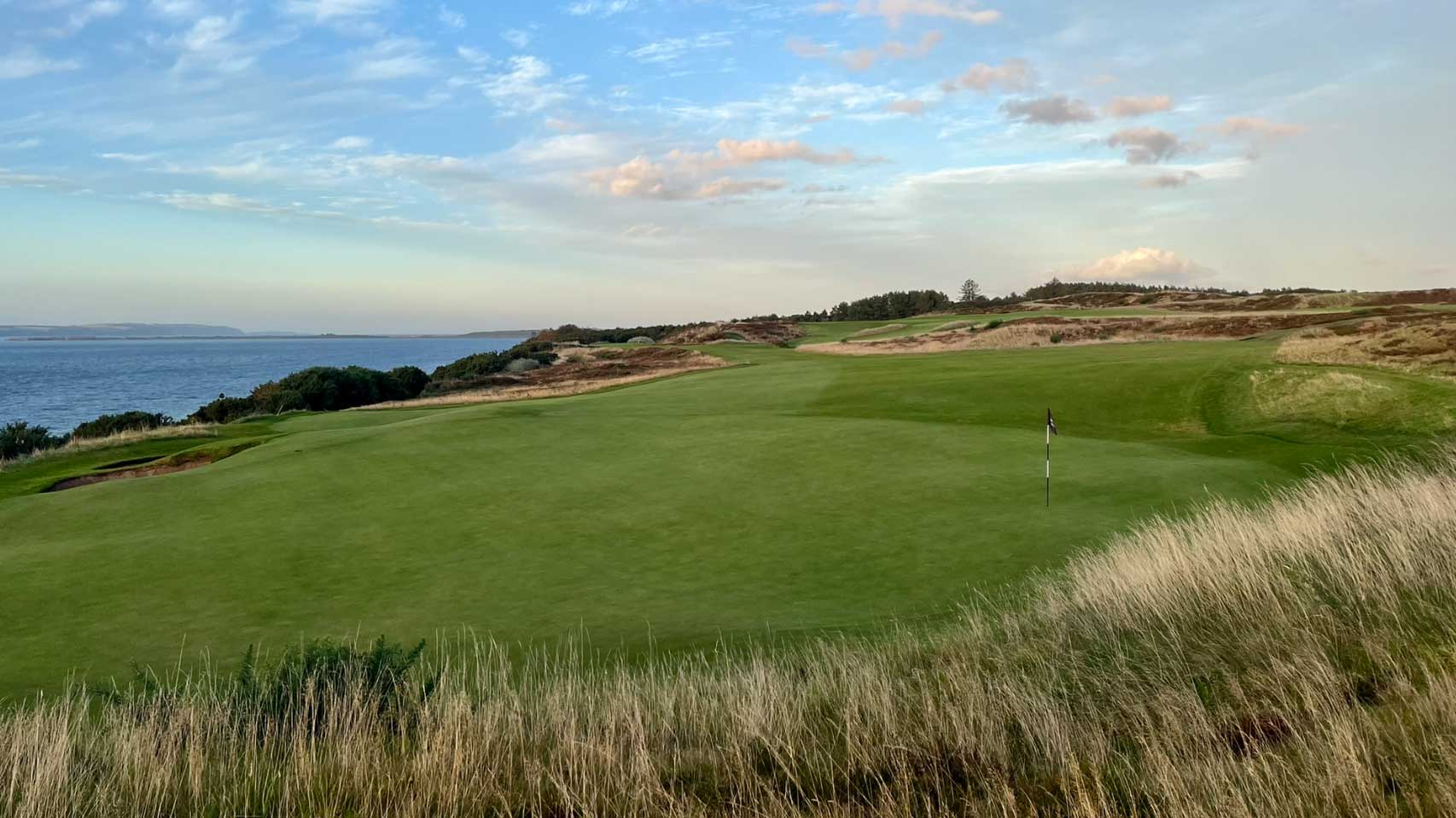
The first three holes play hard against the firth, as do 10 and 11. But the rest of the course sits on higher ground, with the holes tacking back and forth so you can never get comfortable with the wind. The par-3 4th plays back inland with the course’s namesake serving as a handsome backdrop behind the green. My favorite hole is the firth-lined par-4 10th, where the tee sits high above the fairway, offering one of the most arresting vistas on the course — and also one of the nerviest tee shots. There’s plenty of room to land your drive but overcook it and your Srixon might well go swimming with the salmon.
One of the property’s other most memorable lookouts comes not on the course but in the clubhouse locker room, where bathers can take in the majesty of Castle Stuart from strategically placed windows in the showers.
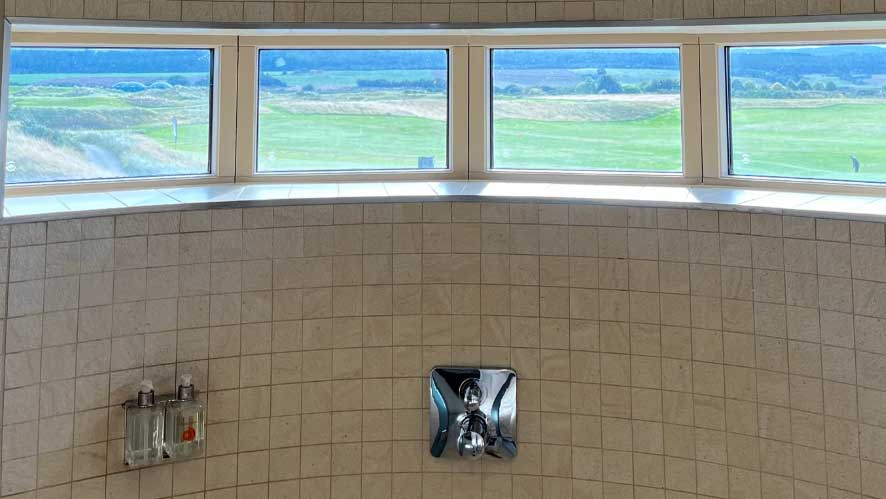
What will Doak’s course do for Cabot Highlands? Presumably what Pacific Dunes (also a Doak design) did for Bandon Dunes, or Cabot Cliffs did for Cabot Cape Breton — i.e., quickly turn the destination from a nice-to-visit into a must-visit. Doak still has much work to do on his assignment but his overarching mission is simple: don’t try to do too much.
“People come to Scotland to play a variety of golf courses, and they’re all seaside and the links factor into a lot of them, but the featuring is very different from one of them to the next,” he said. Of his Cabot project, he added: “I don’t think we have to be overly concerned at the beginning that we’re trying to make it really different than [the existing course], as long as it feels like it fits in Scotland. Whether it’s a little more like this or a little less like this, I don’t think will make any difference.”
To Cabot Highlands, though — and Highlands golf at large — the course is likely to make a big difference.
Green fees at Castle Stuart range from $255-$330. Stay-and-play packages start at $440/night per guest. Reservations can be made here.
Latest In Travel

Alan Bastable
Golf.com Editor
As GOLF.com’s executive editor, Bastable is responsible for the editorial direction and voice of one of the game’s most respected and highly trafficked news and service sites. He wears many hats — editing, writing, ideating, developing, daydreaming of one day breaking 80 — and feels privileged to work with such an insanely talented and hardworking group of writers, editors and producers. Before grabbing the reins at GOLF.com, he was the features editor at GOLF Magazine. A graduate of the University of Richmond and the Columbia School of Journalism, he lives in New Jersey with his wife and foursome of kids.

